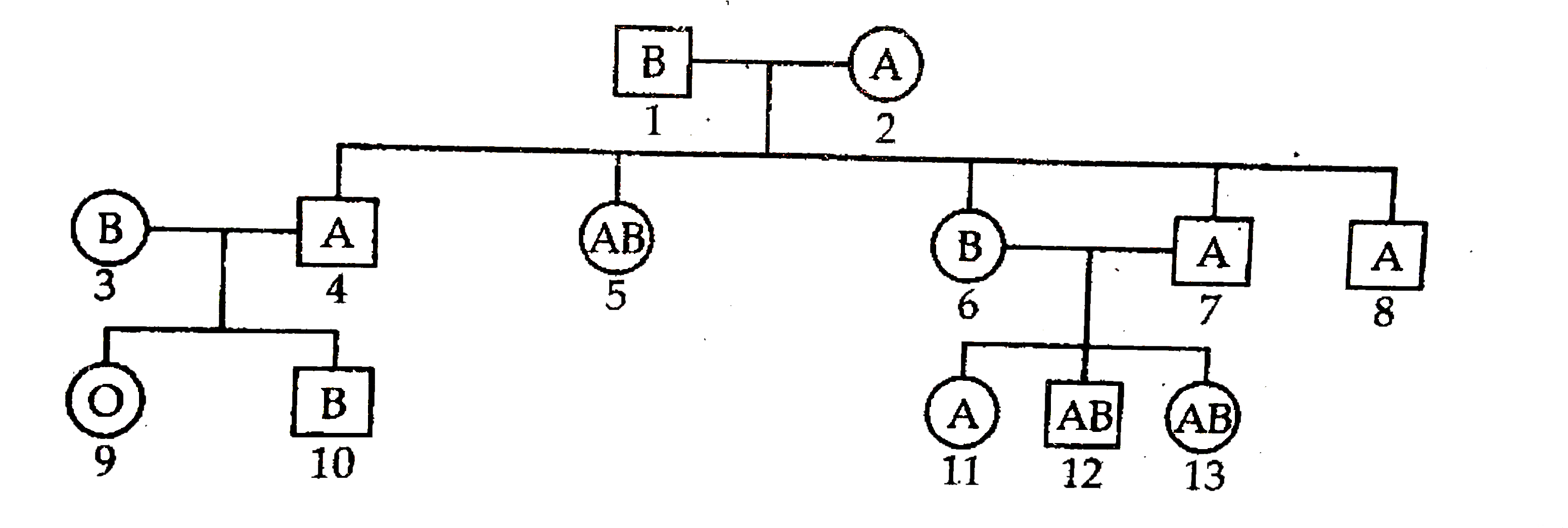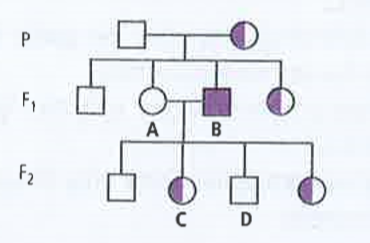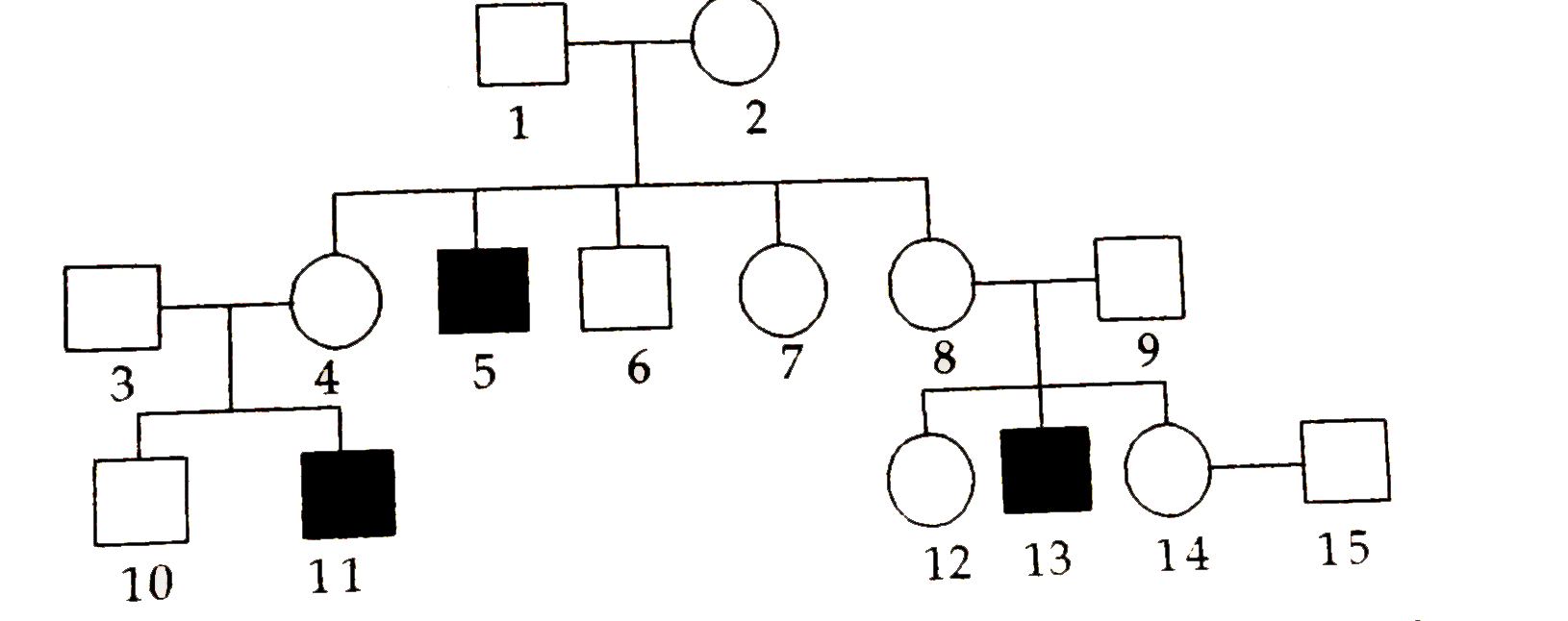Study the pedigree chart given, showing the Inheritance pattern of blood groups in a family and answer the following questions

(a) Give the possible genotypes of the individuals 1 and 2.
(b) Which antigen or antigens will be present on the plasma membranes of the RBC's of individuals 5 and 9.
(c) Give the genotypes of the individuals 3 and 4.Solution in Kannada
Topper's Solved these Questions
- GENETICS AND EVOLUTION BOOK - TRUEMAN BIOLOGYCHAPTER - GENETICS AND EVOLUTION EXERCISE - SECTION-D
25 Videos
- GENETICS AND EVOLUTION BOOK - TRUEMAN BIOLOGYCHAPTER - GENETICS AND EVOLUTION EXERCISE - SECTION-B
38 Videos
- GeneticsBOOK - TRUEMAN BIOLOGYCHAPTER - GeneticsEXERCISE - ASSERTION AND REASON
122 Videos
- HUMAN HEALTH AND DISEASEBOOK - TRUEMAN BIOLOGYCHAPTER - HUMAN HEALTH AND DISEASEEXERCISE - MULTIPLE CHOICE QUESTIONS
211 Videos
Similar Questions
Give reason for -
(i) Both strands of DNA are not copied during transcription.
(ii) Transcription and translation in bacteria can be coupled.
View SolutionGiven below is a sequence of steps of transcription in a eukaryotic cell. Fill up the blanks (1,2,3,4) left in the sequence .

View Solution[A]: The two members of a gene pair segre- gate from each other into the gametes.
[R]: During gametogenesis, the segregation of one gene pair is independent of other gene pair.
View SolutionWhich of the following is a set of bacterial diseases?
View SolutionStudy the given pedigree chart showing the inheritance if an X-linked trait controlled by gene 'r'

What will be the genotypes of individuals A,B,C and D respectively ?
View SolutionStudy the pedigree chart given, showing the Inheritance pattern of blood groups in a family and answer the following questions

(a) Give the possible genotypes of the individuals 1 and 2.
(b) Which antigen or antigens will be present on the plasma membranes of the RBC's of individuals 5 and 9.
(c) Give the genotypes of the individuals 3 and 4.
View SolutionStudy the given pedigree chart showing the pattern of blood group inheritance in a family (a) Given the genotype of the following: (i)Parents (ii) The individual 'X' in second generation (b) State the possible blood groups of the individual 'Y' in third generation (c) How does the inheritance of this blood group explain codominance?
View SolutionIn no antigen is present on the RBC membrane, the blood group of an individual is
View SolutionMention the possible genotypes of A and B blood group individuals.
View SolutionStudy the given pedigree chart showing the inheritance if an X-linked trait controlled by gene 'r'

What will be the genotypes of individuals A,B,C and D respectively ?
View SolutionDraw a chart showing ABO blood groups, their antigens, antibodies and genotypes.
View SolutionHaemophilia is a sex linked recessive disorder of humans. The pedigree chart given below shows the inheritance of Haemophilia in one family. Study the pattern of inheritance and answer the questions given.

(a) Give all the possible genotypes of the members 4, 5 and 6 in the pedigree chart.
(b) A blood test shows that the individual 14 is a carrier of gaemophilia. The member numbered 15 has recently married the member numbered 14. What is the probability that their first child will be a haemophilic male ? Show with the help of Punnett square.
View SolutionStudy the pedigree chart given, showing the Inheritance pattern of blood groups in a family and answer the following questions (a) Give the possible genotypes of the individuals 1 and 2. (b) Which antigen or antigens will be present on the plasma membranes of the RBC's of individuals 5 and 9. (c) Give the genotypes of the individuals 3 and 4.
View SolutionStudy the given pedigree chart showing the pattern of blood group inheritance in a family (a) Given the genotype of the following: (i)Parents (ii) The individual 'X' in second generation (b) State the possible blood groups of the individual 'Y' in third generation (c) How does the inheritance of this blood group explain codominance?
View SolutionMention the possible genotypes of A and B blood group individuals.
View Solution

